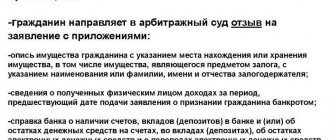Valuation of the debtor's property is a procedure provided as part of collection measures. Required to determine the value at which the property will be sold. If the assessment is carried out by court order, the event will be regulated by the law on enforcement proceedings, in particular, Article 229. It can be carried out by a bailiff or an independent appraiser.
The specific method depends on the nuances of the situation. The debtor is primarily interested in a high valuation of property, since this factor determines whether the funds received will be enough to pay all debts.
Why is an assessment of the debtor's property necessary?
If a person does not pay debts for a long time, the process of enforcement proceedings begins. If a corresponding application has been submitted, the property is seized and subsequently sold. A specialized company is engaged in sales. Sales can be made through tenders and auctions. To participate in such procedures, it is necessary to determine the value of the property. Without this, it will be impossible to find the starting price for bidding. Information on the sale of confiscated and seized property is here.
There are several interested parties in the case - the debtor and creditor, bailiffs. The sale of property by bailiffs implies that the latter are interested in selling the property at a lower price, since the speed of collection depends on this.
To protect the interests of the creditor, the law provides for the need for the participation of an independent appraiser in the case, who will objectively analyze all available factors and set a price.
When conducting an assessment, the debtor has the right to draw the specialist’s attention to those objects that he wants to sell first.
List of documents for assessing a license or patent owned by a bankrupt enterprise:
- Name of the intellectual property object (license, patent);
- Description of the intellectual property;
- Title documents for a patent, license;
- Sources of income from the use of a license, patent;
- Costs for legal support of a license, patent;
- Other documents
Print list
Consequences of introducing an implementation procedure
- All financial calculations are carried out by the manager.
- The bankrupt's income goes to the manager's accounts.
- For transactions worth more than 50,000 rubles, the approval of the manager must be obtained.
- All enforcement proceedings against the debtor are suspended.
- All claims of creditors are terminated and redirected only through the court.
- Accrual of interest and penalties for delays are stopped.
- The debtor has an obligation to provide the necessary documents and information at the request of the manager.
PROPERTY OF SPOUSES
Bankruptcy of individuals is a personal, separate procedure, but as long as it does not affect the common property of the spouses.
What if, for example, the car was purchased as a marriage? Unambiguously indicate in the inventory of property with clarification of ½ share in the right.
In the event of bankruptcy of an individual - one of the spouses - jointly acquired property will be sold to the manager. The second spouse will be compensated for the cost of his share.
The question often arises: is it possible to secure joint property? Bankruptcy of individuals is a process that requires accurate and informed decisions based on experience and knowledge.
Spouses can enter into an agreement on the division of property, a purchase and sale agreement or a gift agreement. It must be remembered that any transaction with property can be challenged. If you decide to make a property transaction, consult a specialist to assess the risks.
Who conducts the assessment?
Who will carry out the procedure, a bailiff or an appraiser, depends on the type of property, its estimated value, as well as the wishes of the debtor himself.
Bailiff
An assessment of the debtor's property can be carried out by a bailiff only when the preliminary cost of the objects does not exceed 30,000 rubles. This will also require the consent of the debtor. The procedure is carried out at market prices that are valid at the current time. The exception is regulated prices. The prices set by the bailiff are final. If it was not possible to sell the property, it is prohibited to assign a markdown. The procedure has the following nuances:
- If the assessment is considered difficult, the bailiff has the right to personally involve an appraiser. Specialist services are paid. They are paid for the amount received at the auction;
- The debtor has the right to disagree with the assessment made. In this case, he is given ten days to appeal. The event is carried out in court. The debtor will have to engage an independent appraiser and also pay for his services;
- If the preliminary price of the property does not exceed 30,000 rubles, the debtor has the right to sell it himself. To do this, he needs to file a petition with the court within 10 days from the date of seizure. This is an opportunity to sell property at the best price. It is determined by the debtor himself. However, a citizen should take into account that the price should be attractive to potential buyers. This will allow the property to sell faster.
The starting price is the price at which the objects will be presented at auction. It is increased by a supplement from participants. Determined on the basis of the cost indicated in the writ of execution. The preliminary price of objects is set by the bailiff in the property inventory report.
The prices set by the bailiff are final.
Independent expert
Inviting an independent expert to the case is a condition that allows you to maintain the professionalism of the procedure. The bailiff is not a specialist in the field of valuation, and therefore cannot provide completely objective results. He must, within a month, invite an independent expert to carry out the procedure if there are the following types of property:
- Real estate;
- Securities that are not put into circulation on an organized market;
- Property rights (with the exception of receivables that are not sold at auction);
- Jewelry;
- Collectible coins;
- Objects with historical or cultural value;
- Items whose preliminary cost exceeds 30,000 rubles.
The value determined by the expert cannot be disputed by either party to the case. The specialist’s report is sent to the bailiff, who, in turn, must issue a decision on the valuation of the property. Copies of the document are sent to all participants in enforcement proceedings. They must be sent no later than the day after the decision is made.
In bankruptcy proceedings
Settlements with creditors in bankruptcy proceedings are realized at the expense of the debtor’s property. To do this, the bankruptcy trustee must carry out the accounting and assets of the property. Asset valuation is carried out by an independent appraiser at the invitation of the bankruptcy trustee.
The services of an appraiser and other highly qualified specialists who carry out inventory and appraisal are paid from the debtor’s assets, unless the creditors’ committee has appointed another source of payment.
According to the law, a meeting of creditors can appoint a party to whom, with its permission, the obligation to pay for services is transferred.
If, as of the final reporting date, the book value of the debtor’s property is less than one hundred thousand rubles, then, on the basis of a resolution of the creditors’ committee, the assessment is carried out without inviting an independent appraiser.
The debtor's property, which is available at the time of the commencement of bankruptcy proceedings, creates the bankruptcy estate. Property that has been excluded from circulation and property rights is excluded from the bankruptcy estate.
For accurate accounting of property, the bankruptcy trustee may involve an accountant, auditor and other experienced specialists. Important items that belong to the debtor are sold during the auction in bankruptcy proceedings.
The main circumstance of this competition is the buyer’s obligation to maintain, provide socially significant objects and use them for their intended purpose. An independent appraiser determines the value of important items. The proceeds from the sale go to the bankruptcy estate.
A month after the accounting and valuation of the property, the bankruptcy trustee must submit to the creditors a proposal for the implementation of the procedure, conditions, and terms of the debtor’s property.
The sale of property involves the acquisition of finance from the sale 30 days from the date of signing the purchase and sale agreement. The debtor's property is sold at public auction. The starting sale price of the property put up for auction is determined by an independent appraiser.
Responsibilities of the appraiser
An independent expert is a person who has:
- Membership in an independent organization with all necessary licenses;
- Required qualifications, education in the relevant profile;
- Experience and training.
The specialist is required to perform his work strictly in accordance with the law, using special methods.
How are specialist services paid?
Who will pay for the expert's services? It depends on who decided to seek the help of a professional. The following situations are distinguished:
- If in a particular case the assistance of an expert is required by law (for example, the preliminary cost of the property was more than 30,000 rubles), payment comes from the state budget;
- If the debtor does not agree with the bailiff’s assessment, he can invite a specialist himself and pay for his services;
- If the decision on the need for expert assistance is made by the bailiff, related services are paid from the amount received from the sale of objects.
The debtor, before inviting an appraiser, is recommended to familiarize himself with his price list.
The results of the expert assessment are valid for 6 months.
Accounting for expenses associated with bankruptcy procedures.
The fact of the existence of such disputes and the ambiguity of the courts’ interpretation of the provision in question indicated the incompleteness of legislative regulation. With the entry into force of the Law on Enforcement Proceedings of 2007, this gap was filled and the concept of “preliminary assessment” received legitimate status. P. 31.. Proof of this is that the current legislation does not recognize the order of the bailiff as a sufficient basis for a specialist appraiser to carry out work to evaluate the seized property.
The notice must be sent no later than two weeks before the date of the meeting of creditors. It is also mandatory to maintain a register of lenders' requests.
Professional appraisers are subject to the rules of Art. 7 of the Law on Enforcement Proceedings on Valuation, according to which, if a normative legal act containing a requirement for the mandatory carrying out of any valuation object does not define a specific type of value of the valuation object, the market value of this object must be determined.
Features of the assessment
First, the debtor's property is seized. The debtor must provide reliable information about it. If he does not do this, the bailiffs receive the required data through the tax office and banking institutions. After the arrest, the debtor is sent a corresponding act. It contains a complete list of objects that were seized, as well as their preliminary value.
If an independent expert is invited to work, he must conduct the assessment in the presence of a bailiff. This procedure must be completed within 10 days after submitting the application. After the action is completed, the bailiff is sent an expert’s report, which states the market value of the property.
The procedure is performed according to the following algorithm:
- Selecting an independent expert according to his qualifications and licenses. Concluding an agreement for the provision of services;
- Study and analysis of information about the debtor’s property;
- Conducting assessments based on accepted methods;
- Summing up the results, determining the final cost;
- Presentation of results in the form of a report.
The assessment is valid for 6 months.
Assessment methods
The assessment of the debtor's property is carried out in accordance with the law. According to the law, there are three ways to determine the value:
- Profitable . Applies if there is reliable information about the income and expense side of the enterprise in the foreseeable future. Based on this information, rating systems are formed. They are required to determine the forecast period, the financial capabilities of the organization, and the formation of a discount rate. Based on them, the profitability of investment in the project under consideration is also realized;
- Comparative . The assessment is made based on information about the cost of similar items. This procedure is relevant only if there is verified data on similar property. The procedure is performed by a bailiff on the basis of an approved scale;
- Expensive . Relevant for those cases when it is possible to replace the debtor’s property with an item with similar properties.
Once the assessment is completed, it is recorded in the report. The result must be presented in rubles.
The expert's report is of a recommendatory nature. It is used when selling objects at auctions and market auctions.
If the bankruptcy property is assessed, as part of the procedure it is necessary to apply all the methods outlined above. Sometimes an expert may refuse to use any method. In this case, he needs to provide evidence of the impossibility of using a specific technique.
What cannot be seized during bankruptcy of individuals
If you lose a stable income and deteriorate your solvency, the only way out is to declare bankruptcy.
With the onset of bankruptcy, individuals are not seized:
- a plot of land on which the only housing is registered;
- household items and things;
- one dwelling registered per family;
- domestic animals and other livestock, as well as outbuildings;
- awards, prizes, winnings, badges of honor;
- funds set at the minimum subsistence limit;
- fuel for space heating;
- vehicles provided due to disability;
- property that is necessary to perform professional activities, including a car;
- Property whose value is less than 10,000 rubles (upon request) is subject to exclusion.
The only housing of the listed items occupies an important place. It is inviolable - the constitution says so. The status includes residential premises in which the debtor and his family live. No other real estate properties should be listed.
What property should remain is decided by the financial manager. The living conditions of the debtor and family are taken into account.










